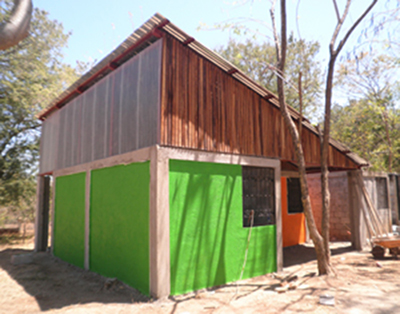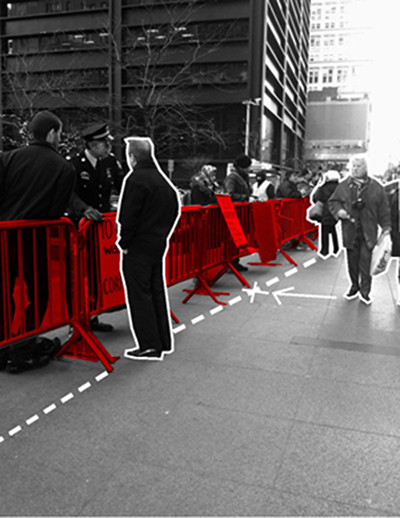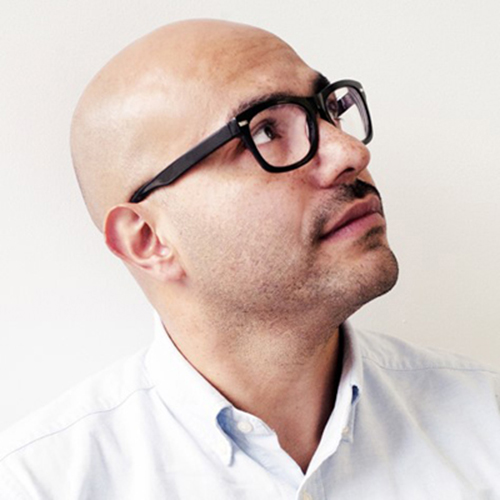Alumni Profile: Quilian Riano MArch ’09
When he was 12, Quilian Riano MArch ’09 moved with his family from Bogota, Colombia to the working-class immigrant community of Hialeah, Florida. After graduating from high school, he enlisted in the U.S. Air Force, where he had the opportunity to work with an engineering squadron that built basic infrastructure in the Rosebud Reservation. His time in South Dakota and growing up as an immigrant in the United States eventually inspired him to begin studying architectural designs. “Both experiences allowed me to see that issues in the built environment are intrinsically tied to larger political and economic structures. I began to wonder how design could help reveal structures of power and help improve the urban context of working-class communities that are often forgotten,” he explains.
Riano’s studies took him from the University of Florida where he earned a bachelor of design degree summa cum laude, to the Harvard Graduate School of Design (GSD) for his master of architecture. It was while he was a student at the GSD that he began to adapt the notion of “critical activism” for design practice as part of his master thesis—a concept which still serves as a guiding principal. Today, in addition to splitting his time as a designer, writer and researcher, he’s an educator teaching theory-based design and urban ecologies studios at Parsons, The New School for Design in the undergraduate and graduate programs of the School of Design Strategies and at the Pratt Institute. In 2009—shortly after graduating from the GSD—he co-founded and became principal of DSGN AGNC (Design Agency), a collaborative design and research studio based in Brooklyn, New York, which explores political engagement through architecture, urbanism, art and activism. “DSGN AGNC was born in part from a concern about the types of questions that are asked by critical architectural practices. Or rather, a concern about the questions not being asked. Who are the powerful entities hiring architects and what are their agendas? Who are the people that actually build architecture and what is their condition? Can architecture and design help society move towards a more equitable model of power distribution? What ties all these questions are the hidden conflicts (power dynamics) that characterize current political economies.”

House in Granada, Nicaragua part of Casas de la Esperanza 2 housing complex. This project is a collaboration between Quilian Riano/DSGN AGNC, Estudio Teddy Cruz and Ball State University.
In practice, the types of projects the studio takes on can mimic various shapes and forms: from designs of housing, public spaces and community gardens to ones more activist in nature such as#whOWNSpace, a collaborative effort that combines academic research with direct action and design to study the privatization of space in New York City. DSGN AGNC never begins a project with a product in mind, but rather with research, which leads them to the right mode of intervention for any given situation. This idea allows them to organize around a piece of policy in the same way as they would when creating a map or a built structure. Specifically, the studio is currently working with the La Union Housing Co-Op in Facatativa, Colombia on the design of 50 houses. Through conversations with the community, they’ve discovered widespread privatization around the area’s periphery, an issue exacerbated by a global flower industry headquartered there. Says Riano, “These complex economic and political processes are just as integral to the project’s context as the landscape around the 50 houses.” The research findings will ultimately give them room to adapt a design suitable to create a long-term plan for the community’s wellbeing and one in which residents can improve upon over time.

Diagram of Zuccotti Park’s Illegal Barriers – Quilian Riano (design), Paula Z. Segal (photographer). Part of #whOWNSpace legal project that lead to the NYPD taking down the barriers.
Riano’s work has been widely featured around the world, including at Harvard and Cornell Universities, the Venice Biennale, the Austrian Cultural Forum, and New York’s Center for Architecture. For his innovative design practices, he’s recently had the distinct honor of being one of three recipients of the 2014 Vilcek Prize for Creative Promise in Design. Presented each year by the Vilcek Foundation, the prize recognizes young foreign-born artists who demonstrate outstanding early achievement and who often face significant challenges early in their careers. “I am especially happy in part because of my interest in how design can be used as a tool for strategic intervention in areas of conflict. The prize will help me focus on some of our existing research and begin new work. I am especially interested in looking at housing designs that can encourage collectivity and sharing of resources as well as more communal ownership models such as community land-trusts,” says Riano.

